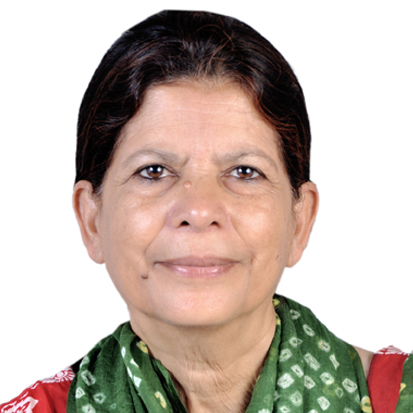Miscellaneous
Outside In, Inside Out
Women’s Studies and Gender Studies as academic programmes have been gradually gaining a foothold in Nepal.
Mira Mishra
Women’s Studies and Gender Studies as academic programmes have been gradually gaining a foothold in Nepal. A post-graduate diploma in Women’s Studies was offered by Tribhuvan University for the first time in 1996. In addition, in 2009, Gender Studies was introduced as a two-year Master’s programme. Within the next two years, Tribhuvan University will very likely offer Gender Studies as a major course at the undergraduate level in colleges across the country. In addition, departments at the university, as well as other universities have incorporated some gender components to their curricula, including in English, Sociology, Anthropology, Geography, Economics and History. It is inspiring that the new scholarship on women and gender has trickled down to the higher secondary level as well. Five years ago, Gender Studies was offered as an optional course in the national curriculum for Grade 12.
Along with the emergence and the evolution of the programmes on women and gender, there has been an increasing demand for good books written by Nepali, as well as international, authors, particularly feminist authors and academics. Several books on women by international authors were prepared as part of their PhDs and, therefore, focus on a specific theme. In addition, a few books on gender and women written by Nepali authors—mostly women but also men—are also available. However, the present book by Chandra Bhadra, Three Decades of Academic Advocacy for Gender Equality and Empowerment of Women in Nepal, is unique in as much as it combines the academic and feminist gaze.
To be sure, Meena Acharya, who is the foremost economist, feminist and policy analyst on women issues in Nepal, has contributed much to our understanding of the changing lives of women during the last several decades. She has continued to fill the gap with her engaged and insightful writings on women and gender. Acharya’s works are received well both nationally and internationally. What sets Bhadra’s work apart from the rest, however, is that she is able to reflect both as an outsider and an insider on gender equality, women’s empowerment, and policy planning and implementation. Bhadra has simultaneously been working with the Nepali government, SAARC secretariat, as well as several INGOs, in different capacities since the 1980s. From the 1980s she has also participated in the feminist movement in Nepal. Most importantly perhaps, the book seeks to encapsulate three full decades of academic, feminist and policy experience within a single volume. In an important sense, therefore, the book provides a three-decade history of the interstices of women, governance and development in Nepal from a feminist standpoint. Bhadra is arguably the only feminist academic in Nepal with such a wide range of engagements.
Three Decades is not only engaged and insightful but also passionate and critical. Composed of 37 academically sound, politically sharp and emotionally charged chapters written between 1986 and 2016, the book advocates gender equality and women’s empowerment. In Bhadra’s own words, “this collection can stand as a testimony of my academic conviction and endeavor as a feminist activist in the path of advocacy for gender equality and empowerment of women in Nepal.”
Bhadra, who retired as professor of Home Science, Women’s Studies, and Gender Studies at Tribhuvan University served as a pioneer academic in the fields as well as a strong feminist and gender advocate. She continues to contribute to both feminism and policy analysis. She has authored a number of books and articles.
This book covers a wide range of important issues such as women’s work at home and outside, valuation of women’s care work, gender and developement, human face of women migrants, feminist critique of gendered war, women’s relationship with natural resources, and motherhood and women’s agency. On the policy domain, it analyses various perspectives such as “women in development,” “gender and development,” and “gender and social inclusion.” Mainstreaming gender in government policy and programme remains a key consideration throughout the book. Both description and explanation remain her central concerns: Throughout her book, she has consistently sought to empirically describe the central issues that have shaped women’s position in society and then to explain why their position is the way it is. This is also the reason why the book has a feminist flavour. Bhadra candidly notes in the introductory sections of the book that she is an academic as well as a feminist activist.
Because the articles span a full three decades, Bhadra requests the reader to “comprehend each article by contextualizing the timeframe of its publication or presentation”. In keeping with this request, the articles come to the reader in chronological sequence beginning with her article of 1986 where she sheds light on the challenges faced by earning women in urban areas in balancing work and family. She writes, “When a woman steps out of the house to get employment …her responsibility of the housework is not shared in the family.” It should be noted that the issue of work-family balance was being raised globally beginning the 1970s. Arlie Hochschild’s Second Shift, it should be noted, was published only in 1989. Similarly, Bhadra argues about the valuation of women’s care work in one of her early articles. During the time, unpaid care work was not a gendered issue in Nepali society, including in the Nepali feminist movement. The issue had just been raised in the global feminist thinking. Socialist feminists in the late 1970s had raised the issue and Ann Oakley, a feminist sociologist, had written about unpaid work, including care work in her Housework in 1974. Bhadra’s book, thus, is able to bring the global feminist discourse to bear upon the social condition of women in Nepal.
Bhadra’s writings also reflect the capacity to look beyond the present and to broaden feminist thinking in order to ensure gender equality and women’s empowerment. For example, she recognises women’s capacity to bear children as a boon to women. She rejects the stereotyped radical feminist interpretation of motherhood. In fact, she goes one step further to argue that women no longer have to depend on men to become a biological mother. In Bhadra’s own words, “It has been a fact of life that a man was required in order to bear a child. But with the test tube technology, we do not even need to depend on men biologically to bear a child.” It is notable that it was not easy, during early 1990s Nepal when the article was written, to legitimise the birth of a child without the intervention of a husband inasmuch as gender inequality and patriarchal control was more pervasive than it is today.
Bhadra’s recognition of women’s subordination in the patriarchal, rural and largely agricultural society there are worth reading. So is her description and explanation of the devaluation of “women’s work”. Equally worth reading is her reconceptualisation of the management of natural resource from the gender perspective where she emphasises women’s agency and writes, “women are the haulers, users, managers of water resources”. In addition, she finds the whole idea of conceptualising Nepali women as a dependent group problematic and urges a reformulation of Nepali women’s identity. She shares with Chandra Mohanty the notion that women in the Third World are not passive, weak and victim-like. It may be noted that Mohanty, in her Under Western Eyes rejected Western feminists’ conceptualisation of Third World women as passive, weak and victim-like by arguing that women’s agency in the Third World had been distorted by feminists in the West.
To conclude, Bhadra armed with feminist perspective has been able to provide a candid picture of the lives of Nepali women over a thirty year period. Her articles speak on one hand about the positive transitions that have been taking places in women’s lives. On the other hand, she identifies the areas of women’s subordination and oppression. This book, therefore, is worth reading by academics, students, policy makers, researchers and lay readers.




 19.12°C Kathmandu
19.12°C Kathmandu








%20(1).jpg&w=300&height=200)

